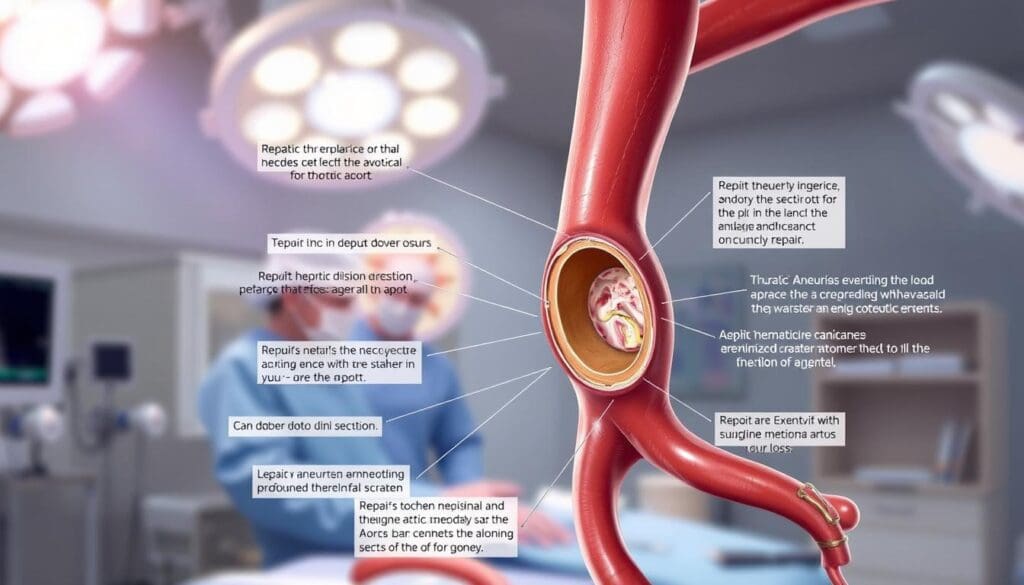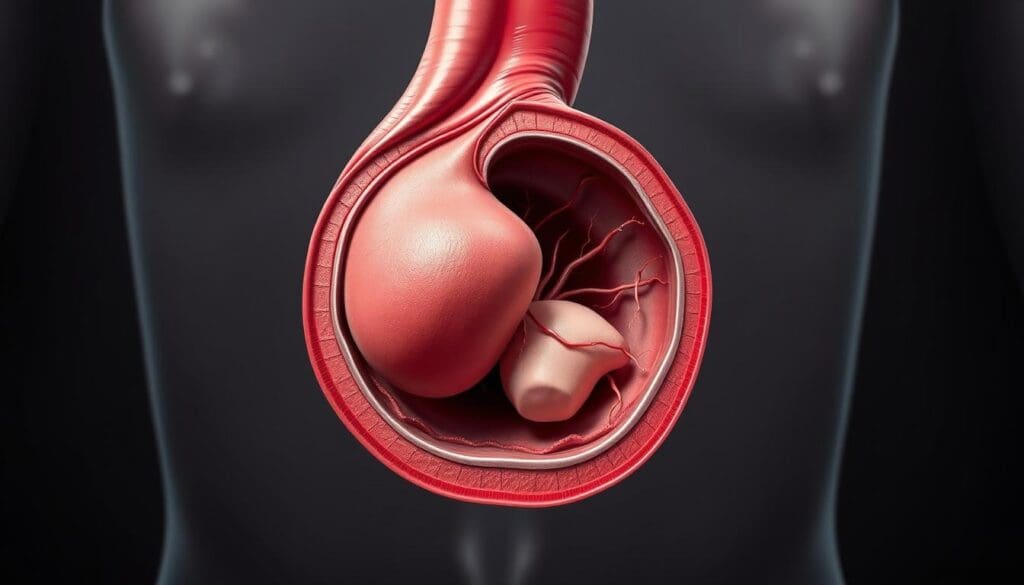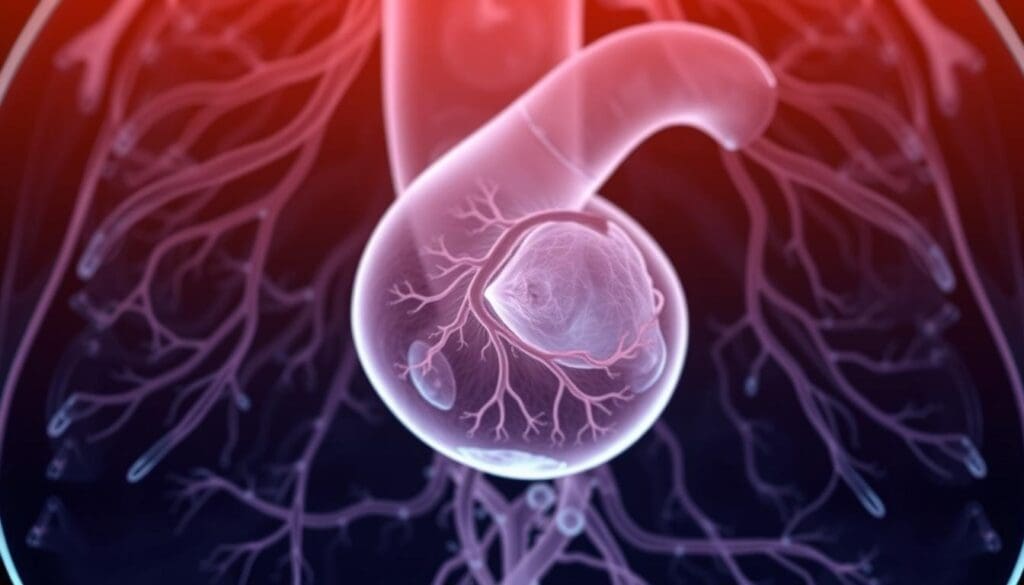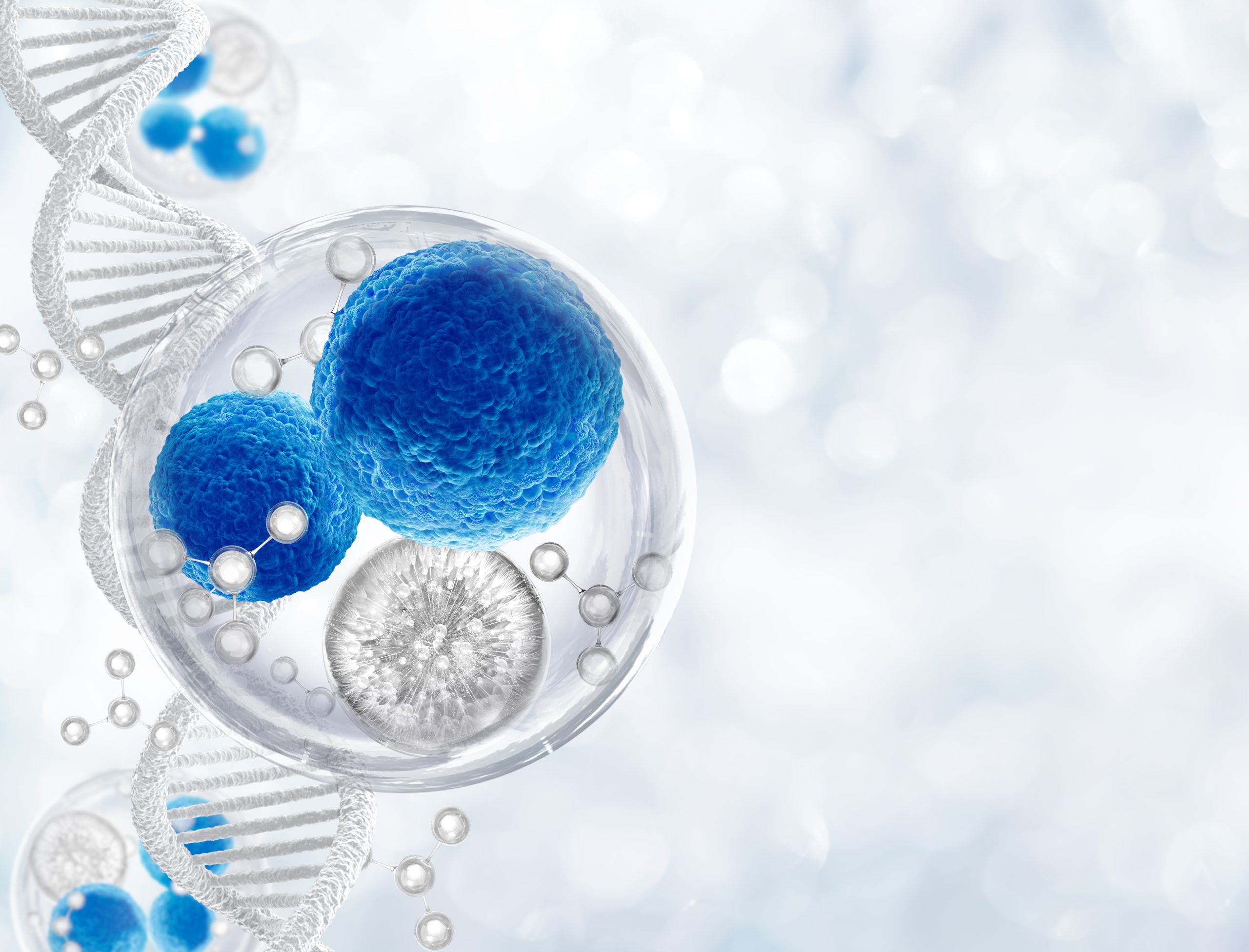Last Updated on November 26, 2025 by Bilal Hasdemir

How is an aortic aneurysm repaired? This is one of the most important questions patients ask when diagnosed with this serious condition. At Liv Hospital, we provide advanced and personalized care to help each patient feel confident and supported throughout their treatment journey.
An aortic aneurysm is often discovered during tests for other health issues. Understanding how an aortic aneurysm is repaired helps you make informed choices about your health and treatment.
Repair options include open surgery or minimally invasive endovascular procedures. Knowing these methods and following proper prevention steps can greatly improve your recovery and long-term outcome.
Key Takeaways
- Understanding treatment options is vital for effective aortic aneurysm repair.
- Liv Hospital offers advanced care and patient-focused solutions.
- Aortic aneurysms are often discovered during unrelated imaging tests.
- Treatment choices include open surgical repair and endovascular techniques.
- Prevention steps play a significant role in managing aortic aneurysms.
Understanding Aortic Aneurysms

It’s important to know about aortic aneurysms to catch them early. They can be very dangerous if not treated. An aortic aneurysm is a weak spot or bulge in the aorta. This is the main artery that carries blood from the heart to the rest of the body.
What Is an Aortic Aneurysm?
An aortic aneurysm happens when the aorta’s wall weakens, forming a bulge. This can be caused by high blood pressure, plaque buildup, or genetics.
The aorta is key for blood flow to the body. If it weakens, the risk of rupture goes up. This can cause severe bleeding and is often fatal.
Types of Aortic Aneurysms
Aortic aneurysms are divided by location and type. The main types are:
- Abdominal Aortic Aneurysm (AAA): Found in the abdominal aorta.
- Thoracic Aortic Aneurysm (TAA): Found in the chest.
- Thoracoabdominal Aortic Aneurysm: Spans from the chest to the abdomen.
Each type has its own risk factors and treatment options.
Risk Factors and Prevalence
Aortic aneurysms are common, affecting about 4-8 percent of adults. They are more common in men and those over 65. Risk factors include smoking, high blood pressure, high cholesterol, and family history.
Knowing these risk factors helps prevent and detect aneurysms early. Regular health checks can spot aneurysms before they become serious.
Diagnosing an Aortic Aneurysm

Diagnosing an aortic aneurysm requires a mix of doctor’s checks and advanced imaging. Knowing the signs is key to catching it early.
Common Symptoms and Warning Signs
Aortic aneurysms often don’t show symptoms until they grow big or burst. Symptoms include back pain, chest pain, or trouble breathing. Sometimes, you might feel a pulsating mass in your belly. Spotting these signs early is critical for quick medical help.
Many aortic aneurysms don’t show symptoms and are found by chance during tests for other issues. Keeping blood pressure in check, quitting smoking, and managing cholesterol can help prevent growth.
Diagnostic Imaging Techniques
Several imaging methods help find and track aortic aneurysms. These include:
- Ultrasound: A non-invasive test that uses sound waves to create images of the aorta.
- Computed Tomography (CT) scan: Provides detailed cross-sectional images of the aorta and is useful for measuring the size of the aneurysm.
- Magnetic Resonance Imaging (MRI): Offers detailed images of the aorta without the use of ionizing radiation.
- Angiography: Involves injecting a contrast dye into the blood vessels to visualize the aorta and its branches.
When to Seek Emergency Care
If an aortic aneurysm bursts, it can cause deadly bleeding. Signs of a rupture include severe pain in the back, chest, or abdomen, and a rapid heartbeat. If you see these signs, get emergency care right away.
Quick medical help can greatly improve chances of survival. Knowing the risks and symptoms helps in getting timely care.
How Is an Aortic Aneurysm Repaired: Treatment Options Overview
There are several ways to fix an aortic aneurysm, each with its own benefits. The right treatment depends on the aneurysm’s size, location, and how fast it’s growing. It also depends on the patient’s health.
Watchful Waiting Approach
For small aneurysms, doctors might suggest a watchful waiting approach. This means they’ll keep an eye on it with imaging tests. They’ll also give advice on lifestyle changes to slow its growth.
The American Heart Association says, “For small aneurysms, watching them with ultrasound or CT scans is recommended. This is to see if they grow or cause symptoms.”
Surgical Intervention Criteria
For bigger aneurysms or those growing fast, surgery is often needed. The decision to have surgery depends on the patient’s age, health, and the risk of surgery complications.
- Aneurysm size: Larger aneurysms are more likely to require surgical repair.
- Growth rate: Aneurysms that grow quickly are at higher risk of rupture.
- Symptoms: Presence of symptoms such as pain or tenderness may necessitate surgical intervention.
Emergency vs. Elective Procedures
Aortic aneurysm repair can be urgent or planned. Emergency surgery is for aneurysms that have burst or are likely to burst. Planned repair is for aneurysms that are at lower risk but need treatment.
| Procedure Type | Description | Indications |
| Emergency Surgery | Immediate surgical intervention | Ruptured or high-risk aneurysms |
| Elective Surgery | Planned surgical repair | Lower-risk aneurysms that need treatment |
A vascular surgeon says, “The key to fixing an aortic aneurysm is acting fast. Whether it’s emergency or planned surgery, it’s all about what’s best for the patient.”
Open Surgical Repair Procedure
The open surgical repair is a common method to fix aortic aneurysms. It involves replacing the damaged part of the aorta with a synthetic graft. This approach has been a mainstay in treating aortic aneurysms for many years, providing a lasting solution for those with the right anatomy.
Preparation for Open Surgery
Getting ready for surgery is key. It includes checking the patient’s health, like their heart and lungs. Patients are told to quit smoking, manage their blood pressure, and control their diabetes to lower surgery risks.
They also review their medications. Changes are made to reduce bleeding or other problems during and after surgery.
The Surgical Process
For open surgery, a big incision is made in the chest or belly to reach the aorta. The incision spot depends on where the aneurysm is. For example, chest aortic aneurysms might need a chest incision, possibly cutting the breastbone or making a cut between the ribs.
After getting to the aorta, it’s clamped on both sides of the aneurysm. The bad part is then taken out and replaced with a synthetic graft. This graft is sewn in, and the clamps are removed to let blood flow again.
Recovery and Hospital Stay
Recovering from open surgery takes time and starts in the ICU. Pain management is a top priority, with meds to help with pain.
The hospital stay usually lasts 7 to 10 days. During this time, patients are encouraged to move around and do breathing exercises to avoid problems like pneumonia. Before leaving, they get tips on wound care, follow-up visits, and lifestyle changes to help with their recovery.
Endovascular Aneurysm Repair (EVAR)
EVAR has changed how we treat aortic aneurysms. It’s a safer, more efficient way to treat them. EVAR uses a mesh sleeve to strengthen the aorta, stopping the aneurysm from growing or rupturing.
Candidates for EVAR
Not every patient with an aortic aneurysm can have EVAR. Doctors look at the aneurysm’s size and location, the patient’s health, and any other health issues. Those with aneurysms in the abdominal aorta and a good anatomy for stent grafts are usually good candidates.
The EVAR Procedure
The EVAR procedure starts with small incisions in the groin to reach the femoral arteries. A stent graft is then inserted and guided to the aneurysm using imaging. Once in place, it expands to fit the aortic walls, excluding the aneurysm from the circulation.
Advantages Over Open Surgery
EVAR has many benefits over open surgery. It has less risk of complications, less pain, and a shorter hospital stay. It can even be done under local anesthesia, which is safer. These reasons make EVAR a good choice for those at high risk for surgery or with complex health issues.
Recovery Timeline
Recovery from EVAR is faster than open surgery. Most patients can get back to normal in a few weeks. But, they should avoid hard activities for longer. It’s important to have follow-up imaging to check the stent graft and aneurysm, making sure there are no problems.
Treatment for Heart and Aortic Aneurysms in Complex Cases
New medical technology has greatly improved treating complex aortic aneurysms. These cases often have unique challenges that need special treatments.
Fenestrated Stent Grafts
Fenestrated stent grafts are a big step forward in treating complex aortic aneurysms. They are made to fit each patient’s body perfectly. This keeps blood flowing to important organs.
These grafts make endovascular repair possible for more patients. It’s a less invasive option compared to traditional surgery.
Branched Endografts
Branched endografts are another innovative solution for complex aortic aneurysms. They have branches that keep major arteries open. This ensures vital organs get the blood they need.
They are great for cases where the aneurysm affects critical arteries. They provide a strong and lasting repair.
Hybrid Procedures
Hybrid procedures mix open surgery with endovascular methods to treat complex aortic aneurysms. This approach is for cases that don’t fit other treatments.
Hybrid procedures offer the best of both worlds. They provide a customized treatment plan for each patient.
Treatment Options for Thoracic Aneurysms
Thoracic aortic aneurysms are tricky because of their location and how they might affect nearby structures. Treatment options include open surgery and endovascular stent grafting.
| Treatment Approach | Description | Advantages |
| Open Surgical Repair | Traditional open surgery involving a large incision to access the aorta. | Highly effective for complex cases, durable repair. |
| Endovascular Stent Grafting | Minimally invasive procedure using stent grafts to repair the aneurysm. | Less invasive, quicker recovery, suitable for high-risk patients. |
| Hybrid Procedures | Combination of open surgery and endovascular techniques. | Tailored approach for complex cases, balances invasiveness with effectiveness. |
The right treatment for thoracic aneurysms depends on several factors. These include the size and location of the aneurysm and the patient’s health.
How to Fix an Aortic Aneurysm: Comparing Treatment Approaches
Treating an aortic aneurysm depends on its size and the patient’s health. It’s key to look at all treatment options when figuring out how to fix an aortic aneurysm.
Success Rates and Outcomes
Studies show that surgery before an aneurysm bursts has a success rate over 95% (Source). This shows how critical early treatment is.
- Open Surgical Repair: Works well for those with the right anatomy.
- Endovascular Aneurysm Repair (EVAR): A less invasive option with faster recovery.
Risk Assessment
It’s important to weigh the risks of each treatment. Consider the patient’s age, health, and the aneurysm’s size and location.
- Look at the patient’s health conditions.
- Check the aneurysm’s growth rate.
- Assess the risk of rupture.
Considerations
The cost of fixing an aortic aneurysm varies. It depends on the treatment and insurance. Talking about costs with a doctor is essential.
Choosing the Right Procedure
Choosing the right procedure needs a detailed look at the patient’s condition and the aneurysm. A doctor will pick the best treatment based on the patient’s needs.
By comparing treatment approaches and knowing the success rates of aortic aneurysm repair, patients can make better choices about their care.
How to Stop an Aortic Aneurysm from Growing
To stop an aortic aneurysm from growing, it’s important to have a detailed plan. This plan should tackle the main risk factors and include lifestyle changes.
Blood Pressure Management
Keeping blood pressure in check is key to stopping an aortic aneurysm from getting bigger. High blood pressure puts extra stress on the aortic walls, which can cause them to expand further.
- Monitor blood pressure regularly
- Adhere to prescribed antihypertensive medication
- Maintain a healthy diet low in sodium
Effective blood pressure management can greatly reduce the risk of aneurysm growth and rupture.
Smoking Cessation Strategies
Smoking is a big risk factor for aortic aneurysm growth and rupture. Quitting smoking can greatly improve heart health.
- Consult a healthcare provider about smoking cessation programs
- Consider nicotine replacement therapy or prescription medications
- Join support groups for motivation and guidance
Smoking cessation is a critical step in managing aortic aneurysm and preventing its growth.
Cholesterol Control
High cholesterol levels can lead to atherosclerosis, which is linked to aortic aneurysm development and growth.
- Follow a heart-healthy diet rich in fruits, vegetables, and whole grains
- Engage in regular physical activity to improve lipid profiles
- Take prescribed cholesterol-lowering medications as directed
Cholesterol management is essential for reducing the risk of aneurysm growth and cardiovascular events.
Exercise and Weight Management
Regular exercise and a healthy weight are key parts of managing aortic aneurysm.
Exercise helps control blood pressure, improves lipid profiles, and lowers cardiovascular risk. It’s important to talk to a healthcare provider before starting any new exercise program, even with a pre-existing condition like an aortic aneurysm.
By adding these strategies to daily life, people can lower the risk of their aortic aneurysm growing and improve their heart health.
Post-Treatment Care and Follow-Up
After aortic aneurysm repair, post-treatment care is key. It helps ensure the treatment works well and catches any problems early.
Immediate Post-Operative Care
Right after the surgery, patients are watched closely in the hospital. Close monitoring helps spot and fix any early issues.
Important parts of early care include:
- Watching vital signs and overall health
- Managing pain well
- Keeping infections away with good wound care
- Starting to move early to avoid deep vein thrombosis
Long-Term Monitoring Requirements
Long-term checks are important for aortic aneurysm repair patients, even after Endovascular Aneurysm Repair (EVAR). Regular scans help make sure the graft works right and watch for problems.
| Monitoring Type | Frequency | Purpose |
| Imaging Tests (e.g., CT scans) | Every 6-12 months | To check the graft’s position and function, and to identify any endoleaks |
| Blood Pressure Checks | Regularly, as advised by the healthcare provider | To manage hypertension and reduce the risk of further vascular issues |
Medication Management
Managing medications is a big part of care after treatment. Patients might take drugs for high blood pressure, cholesterol, or to stop blood clots. Following the medication plan is key to avoiding problems.
When to Contact Your Healthcare Provider
It’s important for patients to know when to call for help. Look out for:
- Severe pain or tenderness in the abdomen or back
- Signs of infection, such as fever or redness around the surgical site
- Shortness of breath or chest pain
- Any unusual or concerning symptoms
Regular visits and sticking to the care plan are key for a good recovery. Understanding the value of follow-up care and being active in recovery helps avoid risks and improves outcomes.
Living with an Aortic Aneurysm
Getting diagnosed with an aortic aneurysm changes your life. You’ll need to make big changes in how you live and take care of your health. It’s a big adjustment, but it’s necessary to manage and watch your condition closely.
Lifestyle Modifications
Adapting to life with an aortic aneurysm means making some big changes. Quitting smoking is a must because smoking can make aneurysms grow and burst. Eating a healthy diet full of fruits, veggies, and whole grains helps keep your blood pressure and heart healthy.
It’s also good to stay active, but talk to your doctor first. Avoid heavy lifting and high-impact activities to lower the risk of aneurysm rupture.
Psychological Impact
The mental side of living with an aortic aneurysm is just as important. Feeling anxious and stressed is common. Getting mental health support is key to feeling better and staying well.
Seeing a counselor or therapist can help you deal with your diagnosis. They can teach you how to adjust your lifestyle.
Support Resources
Having support resources is a big help for those with an aortic aneurysm. Support groups, online or in-person, provide a place to share and get support from others who get it.
- Online forums and social media groups dedicated to aortic aneurysm support
- Local support groups hosted by hospitals or community centers
- Educational resources provided by healthcare professionals
Managing Comorbid Conditions
It’s important to manage other health issues if you have an aortic aneurysm. Problems like hypertension and high cholesterol can affect your aneurysm and overall health. Working with your doctor to control these conditions is key.
Regular check-ups and monitoring are vital. They help make sure your other health issues are under control and your aneurysm isn’t getting worse.
Advances in Aortic Aneurysm Treatment
New medical technologies have greatly improved aortic aneurysm treatment. These advancements are making treatments more effective and giving patients more options.
Emerging Technologies
New technologies are changing how we treat aortic aneurysms. For example, biodegradable stents support the aortic wall while it heals and then break down. This could reduce long-term problems.
3D printing is also being used. It makes customized stent grafts that fit each patient perfectly. This could make treatments more effective.
Research Directions
Research is looking into new areas, like fenestrated and branched stent grafts. These devices can treat complex aneurysms that were once untreatable.
Another area of focus is genetic markers for aortic aneurysms. Finding these could lead to early detection and prevention, helping those at high risk.
| Research Area | Description | Potential Benefit |
| Fenestrated Stent Grafts | Customized stent grafts for complex aneurysms | Treatment for previously inoperable cases |
| Genetic Markers | Identification of genetic predispositions | Early detection and prevention |
| Biodegradable Stents | Stents that degrade after supporting the aortic wall | Reduced long-term complications |
Personalized Medicine Approaches
Personalized medicine is key in treating aortic aneurysms. Tailoring treatments to each patient can lead to better results and fewer complications.
Using genomic data to guide treatment is part of personalized medicine. It helps find the best treatment for each patient based on their genes.
The combination of new technologies, ongoing research, and personalized medicine is changing aortic aneurysm treatment. It offers new ways to improve patient care.
Conclusion
It’s key to know the different ways to treat and prevent aortic aneurysms. A good plan for fixing an aortic aneurysm includes checking the condition well, thinking about what each patient needs, and looking at all the treatment choices.
Finding an aneurysm early and treating it right can really help patients. Knowing the risks and acting early can lower the chance of getting an aneurysm or slow it down.
Fixing an aortic aneurysm needs a team effort. This includes doctors, surgeons, and lifestyle changes. There are both surgery and endovascular methods, each suited for different patients based on their health.
Patients can make better choices by learning and talking to their doctors. This way, they can get the best care and have a good chance of a successful outcome.
FAQ
What is an aortic aneurysm?
An aortic aneurysm is a bulge in the aorta. The aorta is the main blood vessel that carries blood from the heart to the rest of the body.
What are the risk factors for developing an aortic aneurysm?
Risk factors include high blood pressure, smoking, and high cholesterol. Family history and certain genetic conditions also play a role.
How is an aortic aneurysm diagnosed?
Doctors use imaging tests like ultrasound, CT scans, or MRI to diagnose an aortic aneurysm.
What are the treatment options for an aortic aneurysm?
Treatment options include watchful waiting, open surgical repair, and endovascular aneurysm repair (EVAR).
How do I know if I need surgery for an aortic aneurysm?
The decision to have surgery depends on the aneurysm’s size, location, and your overall health.
What is the difference between open surgical repair and EVAR?
Open surgical repair involves a big incision and replacing the aorta with a graft. EVAR is a less invasive procedure that uses a stent graft.
How can I prevent an aortic aneurysm from growing?
Preventive measures include managing blood pressure, quitting smoking, controlling cholesterol, and exercising to maintain a healthy weight.
What is the recovery time for aortic aneurysm repair?
Recovery time varies. EVAR usually has a shorter recovery time than open surgical repair.
What are the possible complications of aortic aneurysm repair?
Possible complications include bleeding, infection, and damage to organs.
How often should I follow up with my healthcare provider after aortic aneurysm repair?
Follow-up care is key. The frequency of appointments depends on the procedure and your situation.
Can I lead a normal life after aortic aneurysm repair?
Yes, with proper care and management, many people can live active and normal lives after repair.
What lifestyle modifications are recommended after aortic aneurysm repair?
Recommended modifications include a healthy diet, regular exercise, and stress management.
Are there any new or emerging treatments for aortic aneurysms?
Yes, research is ongoing. New technologies and techniques are being developed to improve treatment outcomes.
How can I manage comorbid conditions with an aortic aneurysm?
Managing comorbid conditions requires working closely with a healthcare provider. A detailed treatment plan is essential.
Wiebers, D. O., Whisnant, J. P., Huston, J., III, Meissner, I., Brown, R. D., Jr., Piepgras, D. G., Forbes, G. S., Thielen, K., Nichols, D., O’Fallon, W. M., & International Study of Unruptured
Intracranial Aneurysms Investigators. (2003). Unruptured intracranial aneurysms: Natural history,
References
- Wiebers, D. O., Whisnant, J. P., Huston, J., III, Meissner, I., Brown, R. D., Jr., Piepgras, D. G., Forbes, G. S., Thielen, K., Nichols, D., O’Fallon, W. M., & International Study of Unruptured Intracranial Aneurysms Investigators. (2003). Unruptured intracranial aneurysms: Natural history, clinical outcome, and risks of surgical and endovascular treatment. The Lancet, 362(9378), 103–110. https://www.sciencedirect.com/science/article/pii/S0140673603138603






